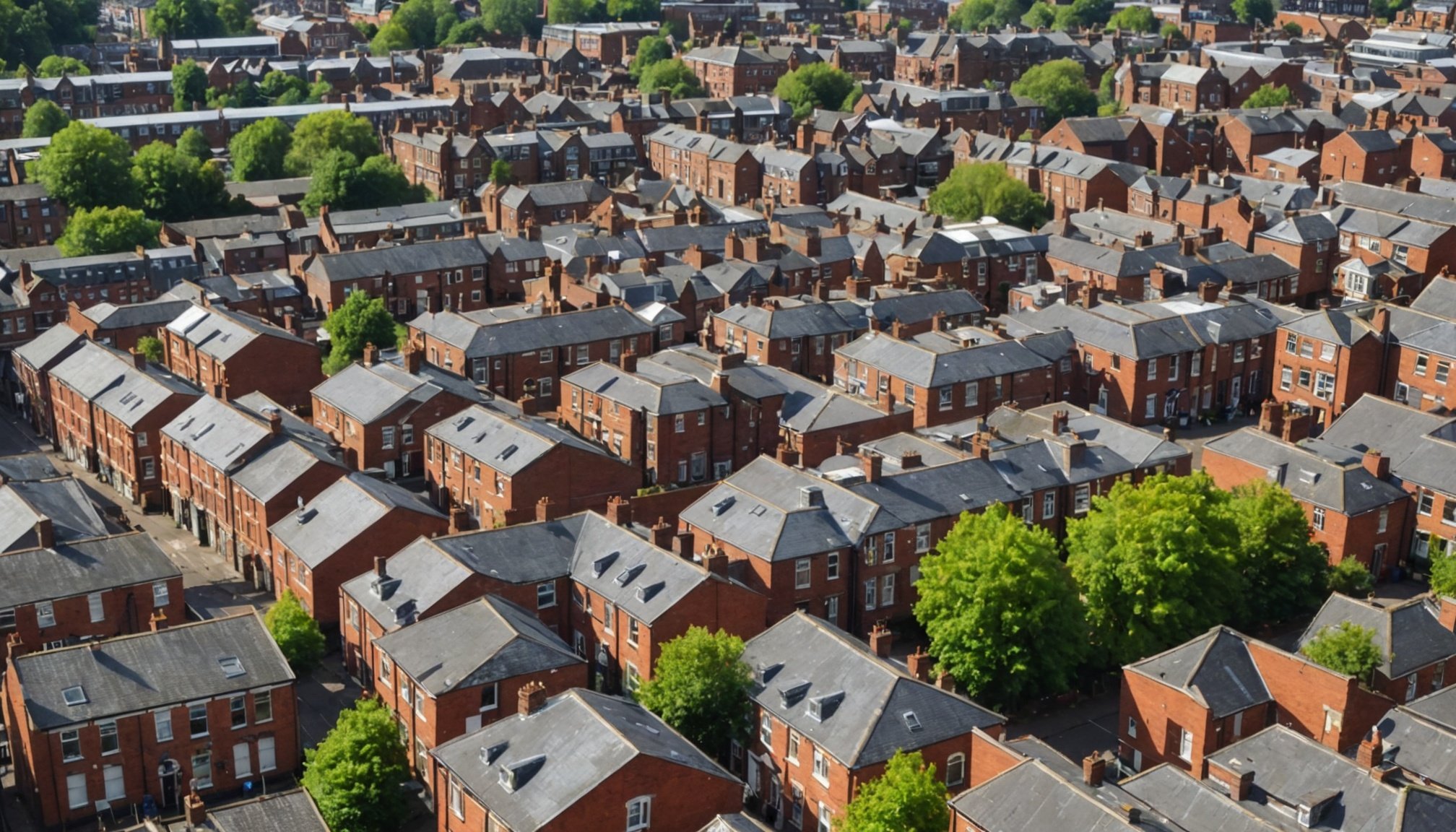Understanding Property Value Appreciation
Property value appreciation refers to the increase in the market value of real estate assets over time. This concept is significant for homeowners and investors, as it influences equity and potential profits when selling. Understanding real estate market trends is crucial for anticipating these value shifts. Analyzing historical data offers insights into how properties have appreciated in Manchester, reflecting broader market behaviours.
Historical context reveals fluctuating property values driven by economic changes, infrastructure developments, and population growth. In Manchester, the post-industrial revival has notably influenced property appreciation, attracting investments and transforming areas.
Dans le meme genre : How Upcoming City Planning Initiatives Will Transform Real Estate in Cardiff
Gentrification analysis highlights its role in boosting property values. As affluent communities move into historically lower-income areas, increased demand leads to renovations and service improvements. Consequently, property values rise, benefiting some while displacing others. Gentrification can substantially impact the real estate landscape, reshaping neighbourhood demographics.
Understanding these dynamics helps in assessing property investments and market strategies. By analysing past and present trends, individuals can make informed decisions, maximising their potential in the competitive real estate market.
A lire également : Essential Legal Factors to Consider for Your Manchester Loft Conversion: A Comprehensive Guide
Key Indicators of Property Value Growth
Understanding the indicators of appreciation in real estate can empower investors to make informed decisions. Among these indicators, real estate metrics play a critical role.
Economic Factors
Economic factors such as employment rates and income levels can significantly influence property values. A thriving local economy typically leads to a demand for housing, driving up prices. Conversely, economic downturns can reduce buyer interest, impacting value. Therefore, analysing these real estate metrics is crucial for predicting market trends.
Demographic Changes
Demographic shifts, including population growth and urbanisation, also affect neighborhoods. An influx of residents in a particular area can lead to increased housing demand, which in turn boosts property values. Additionally, generational preferences may shift market dynamics—Millennials, for example, might favour urban spaces over suburban ones, affecting real estate metrics in distinct ways.
Infrastructure Development
Infrastructure development is another pivotal factor. Improvements in transportation, such as new public transit lines or highways, can make previously less accessible areas more desirable, increasing property values. Assessing this form of market analysis allows for the prediction of appreciation trends, guiding investment strategies effectively. In summary, recognising these key indicators enables a comprehensive understanding of property value growth.
Monitoring Neighborhood Transformation
Monitoring neighborhood transformation demands a keen understanding of gentrification indicators and how they interlink with local real estate trends. This can help to track changes effectively.
Data Sources for Tracking Appreciation
To track the appreciation of property values, several data sources are invaluable. Census data and municipal records provide foundational insights into changes within neighborhoods. By tapping into these resources, one can identify early signs of gentrification and shifts in local real estate trends.
Analyzing Local Market Reports
Local market reports shed light on gentrification indicators by offering a detailed view of dynamic market trends. These reports include data on property sales, price fluctuations, and demographic changes, which can be instrumental in deciphering the extent and speed of neighborhood transformations.
Utilizing Real Estate Platforms
Real estate platforms like Zillow and Redfin offer real-time insights into property trends. These platforms can enhance understanding of neighborhood dynamics by providing access to comprehensive property listings, price histories, and other indicators that signal change.
Overall, utilizing various data sources, market reports, and real estate platforms effectively supports a nuanced analysis of neighborhood transformation and gentrification trends.
Evaluating Gentrifying Neighborhoods
When evaluating a gentrifying neighborhood, several essential characteristics can indicate future success. Look for areas with increasing property values and improvements in local infrastructure, like better roads and new public transportation links. Proximity to urban centers and a growing influx of young professionals can also signal promising developments.
Assessing a neighborhood’s potential for future appreciation involves analyzing ongoing redevelopment projects and community initiatives. Look into local government plans aiming to attract new business and investments, as these can drive demand and boost property values. An upward trend in property investment analysis is another positive sign.
However, investing in gentrifying neighborhoods comes with risks and rewards. One major advantage is the prospect of high returns on investment due to rising property values. Yet, potential downsides include the chance of market instability and displacement of long-term residents, which can cause community unrest.
Performing a thorough gentrification evaluation requires a delicate balance of optimism and caution. This approach helps to mitigate risks and enjoy the long-term benefits of strategic investment in these dynamic areas. Potential investors should remain vigilant and informed to make the most of evolving neighborhood landscapes.
Case Studies: Manchester’s Gentrifying Areas
When exploring Manchester gentrification, examining particular neighborhoods sheds light on various transformative journeys. Leveraging case studies, we identify key success factors and distinct patterns.
Highlighting Successful Neighborhood Transformations
Within neighborhood analysis, Ancoats occupies a prominent position. This area has undergone a significant transformation, spearheading the Manchester gentrification movement. Key factors in its success include the renovation of historical mills and the introduction of trendy eateries, making it a vibrant hub for professionals and creatives.
Lessons Learned from Property Appreciation Trends
The property appreciation in Northern Quarter exemplifies a notable trend. Investing early in this area has consistently yielded promising returns. Proximity to transport networks and cultural establishments played a pivotal role in escalating property values, thus encouraging sustainable investment strategies.
Comparative Analysis of Different Areas
A comparative analysis reveals that neighborhoods like Deansgate present contrasting dynamics. While maintaining traditional elements, rapid development here illustrates diverse market behaviours. In contrast, Salford is gearing up for a renaissance, spurred by infrastructural advancements and strategic civic projects.
These case studies provide invaluable insights for stakeholders looking to invest wisely in Manchester’s dynamic landscape. The successful trajectory of select areas not only speaks to effective urban planning but also highlights the importance of strategic community investments in future gentrification endeavours.
Tools and Resources for Property Investment Decisions
Navigating the world of property investment can be challenging without the right property investment tools. These tools are essential for evaluating potential investments, particularly when considering property appreciation. Analytical software can assist in assessing market trends, historical data, and predictive modeling to forecast future value growth. Such analytical methods are indispensable for investors targeting neighborhoods with high appreciation potential.
Local government resources can also be a gold mine for real estate investors. Many municipalities offer data on zoning laws, development projects, and other initiatives aimed at boosting local growth and infrastructure. These resources provide crucial insights into areas primed for development, allowing investors to make informed decisions.
Additionally, real estate platforms use advanced algorithms to highlight emerging investment hotspots. They draw from various data points, offering a detailed picture of localized property markets. Using a mix of technical insights and local resources, investors can identify lucrative opportunities and minimize risks. Adopting these comprehensive strategies ensures that investment decisions are backed by solid evidence and forecasting, ultimately increasing the potential for successful outcomes in the property market.











